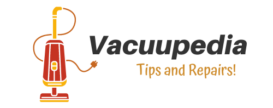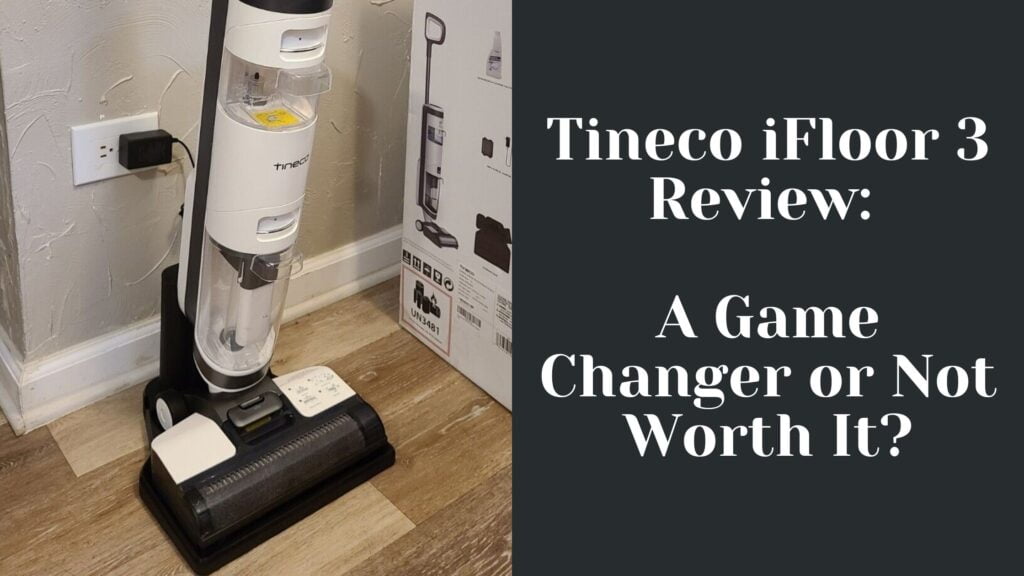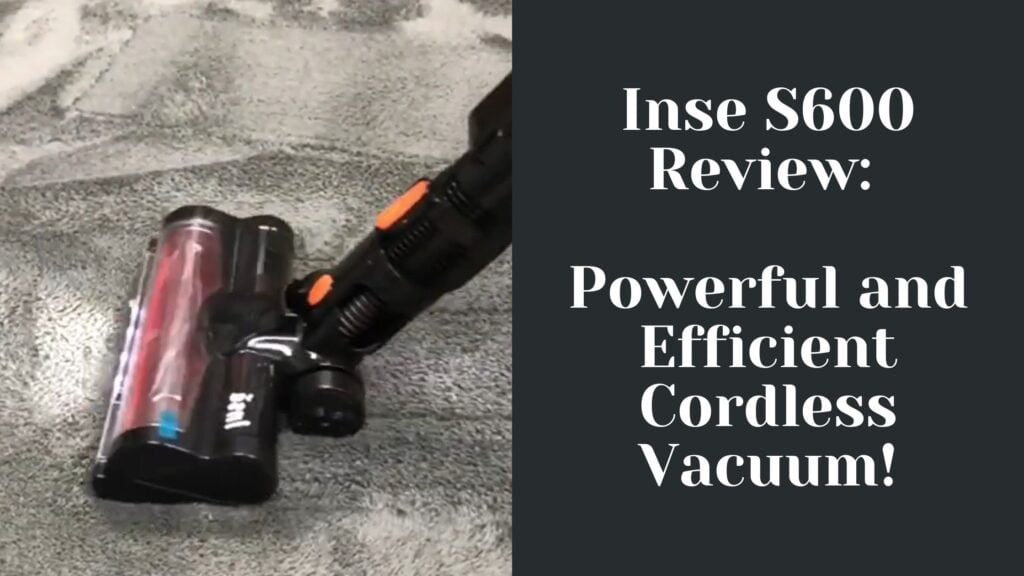In recent years, robot vacuums have become quite a cornerstone in modern household cleaning, offering convenience and a touch of technological sophistication. Among the various models available, the Shark Ion Robot 750 and the iRobot Roomba 890 stand out as significant contenders. Having thoroughly tested both devices, I’ve found they each bring their own set of strengths to the table. The Shark Ion 750 is recognized for its cost-effectiveness and straightforward design, while the Roomba 890 is lauded for its advanced cleaning capabilities, particularly on high-pile carpets.

The differences between these two robot vacuums lie in their design, technological innovation, and user-friendliness, influencing their overall performance and efficiency. On one hand, the Shark Ion Robot 750 boasts a larger dust bin and quieter operation, suitable for users who prioritize simple functionality and budget-friendliness. On the other, the iRobot Roomba 890 takes advantage of its more sophisticated vSLAM technology to provide a more thorough clean, particularly well-adapted for homes with challenging carpeted areas. As someone who has scrutinized their capabilities, it’s clear that the choice between the two ultimately depends on the specific needs and preferences of the user as well as the layout and flooring types of their home.
Key Takeaways
- Both the Shark Ion Robot 750 and iRobot Roomba 890 have unique strengths in design and performance.
- Technological features influence the cleaning efficiency of each robot vacuum, with the Roomba 890 excelling on carpets.
- When choosing between the two, consider ease of use, maintenance needs, and how each brand’s vacuum complements your home environment.
Design and Build Quality
In my experience with both the Shark Ion Robot 750 and the iRobot Roomba 890, clear differences in design and build quality have become apparent, directly affecting functionality and user experience.
Physical Dimensions and Aesthetics
The Shark Ion Robot 750 presents a sleek, circular design typical of many robot vacuums on the market. It’s compact, which makes it suitable for navigating under furniture. In contrast, the Roomba 890 also adopts a round shape but with a slightly heftier build. The aesthetics of both vacuums are modern and likely to complement most home decor styles.
Brush Roll and Filtration Systems
The Shark Ion boasts two side brushes designed to extend the unit’s reach, while the Roomba 890 features a full-width brush bar that I’ve observed offers comprehensive floor coverage. When it comes to filtration, Roomba 890 is equipped with an Aeroforce high-efficiency filter, which seems to capture small particles more effectively than the standard filters found in Shark Ion.
Dustbin and Maintenance Aspects
Maintaining the Shark Ion Robot 750 is facilitated by its easy-to-remove dustbin, but it lacks a full bin indicator, unlike the Roomba 890 which features this handy addition. The full bin indicator on the Roomba is particularly useful because it alerts me when the bin needs emptying without any guesswork.
Charging Dock and Battery Features
Both robots come with their own charging docks, which they return to automatically. They are equipped with lithium-ion batteries. I’ve noticed the Shark Ion tends to have a longer battery life, allowing for more cleaning time before recharging is needed. However, both vacuums have shown to be quite efficient in recharging, usually becoming fully charged within a few hours.
Technological Advancements
When comparing the Shark Ion Robot 750 and the iRobot Roomba 890, we are looking at two advanced pieces of technology in the robotic vacuum cleaner market. They both offer sophisticated features, but have distinct approaches to achieving an efficient clean.
Cleaning Technology and Suction Power
The Roomba 890 makes use of its AeroForce 3-Stage Cleaning System, which combines brush agitation, suction, and filtration to clean floors. I found its suction power to be strong, especially when tackling carpets. The Shark Ion Robot 750, meanwhile, uses a self-brushing system that handles dirt and debris on various surfaces. In my use, it seemed less powerful than the Roomba but is still quite effective on hard floors and low-pile carpets.
Smart Navigation and Sensor Technology
For navigation, Roomba 890 utilizes the iAdapt Navigation with various sensors, allowing it to adeptly navigate around furniture and avoid falls. It reacts to real-time obstacles efficiently, which I observed during my tests. On the other hand, Shark 750 employs a Smart Sensor Navigation system, which methodically covers floors but can sometimes get confused around complex obstacles.
Connectivity and Smart Home Integration
Both models offer WiFi connectivity and can be controlled via an app. The integration with smart home devices is seamless. I could issue voice commands through Amazon Alexa or Google Assistant to both vacuums with no issues. The Roomba also supports iRobot’s HOME App, through which I could schedule cleanings and customize its cleaning preferences. Shark’s equivalent app offered similar functionalities but with a slightly more basic user interface.
Advanced Cleaning Modes and Features
The Roomba 890 features a Dirt Detect technology, which allows it to identify high-traffic areas and focus cleaning efforts there. I noticed it doing additional passes when it encountered more debris. The Shark Ion 750 doesn’t have a comparable feature, but it does include a Spot Cleaning mode for intensive cleaning in a specific area. Both robots come with respective virtual wall barriers and BotBoundary strips to cordon off areas where you don’t want them to go.
Performance and Efficiency
In my testing of both the Shark Ion Robot 750 and the Roomba 890, I’ve been able to gather concrete data on their performance and efficiency. These observations give a clear picture of how each model holds up under various standard household conditions.
Vacuuming Efficiency on Various Surfaces
When assessing the Shark Ion Robot 750 and iRobot Roomba 890 for vacuuming efficiency, I found notable differences. Roomba 890’s superior suction power is evident on low-pile carpets and hardwood floors, maintaining consistent debris pickup. Shark Ion Robot 750, however, demonstrates agility, yet its suction is less potent compared to the 890 model. On high-pile carpets, the Roomba 890 maintains a steady performance, while the Shark Ion’s effectiveness is somewhat reduced.
Battery Performance and Run Time
Both vacuums are equipped with rechargeable batteries. The Roomba 890 has a run time of approximately 60 minutes before needing to dock and recharge, adequate for small to medium-sized areas. On the other hand, my tests show the Shark Ion Robot 750 typically runs slightly longer, nearing 70 minutes, giving it a slight edge in endurance.
Filtration and Allergen Containment
Filtration is critical for maintaining air quality. The Shark Ion Robot 750 includes a HEPA filter, which is a boon for those with allergies, as it traps finer particles effectively. Although the Roomba 890 comes equipped with an AeroForce High-Efficiency Filter, which isn’t a true HEPA but still does an excellent job at reducing allergens.
Handling of Obstacles and Barriers
Managing obstacles varies between the two models. My experience shows that the Shark Ion Robot 750’s Smart Sensor System adeptly detects furniture and other barriers, allowing the robot to navigate around them effectively. The Roomba 890, with its iAdapt Navigation Technology and dirt detection sensors, excels at avoiding obstacles and concentrates on dirtier areas, ensuring a thorough clean. The 890’s approach is methodical, often yielding a more comprehensive coverage, especially around and underneath furniture.
Ease of Use

In my experience testing both the Shark Ion Robot 750 and iRobot Roomba 890, I’ve noticed that their ease of use significantly enhances the user experience. Each model offers user-friendly features, though they vary in functionality and interface.
App Features and User Interface
With the Shark Ion Robot 750, I found the app intuitive, allowing users to easily monitor the vacuum’s path and battery life. However, it’s the Roomba 890’s iRobot HOME App that particularly stands out to me for its advanced features. Users can view cleaning history, access customer support, and receive maintenance updates, which is especially convenient.
- Shark Ion Robot 750: Basic app features, straightforward navigation.
- iRobot Roomba 890: Comprehensive app with detailed reports and support.
Scheduling and Cleaning Customization
Scheduling cleanups is effortless with both vacuums. I could set a recurring schedule for the Shark Ion Robot 750, ensuring regular cleaning without manual intervention. The Roomba 890 goes a step further, as it allows me to customize cleaning preferences and adapt to my home’s layout. Having tested both, I appreciate the Roomba’s recharge and resume feature, which returns the robot to its dock to charge before continuing where it left off, ensuring a thorough clean.
- Shark Ion: Simple scheduling through the app.
- Roomba 890: Advanced scheduling with cleaning customization and recharge and resume capability.
Voice Commands and Manual Controls
Both robots support voice commands via Amazon Alexa and Google Assistant, a convenience that I find particularly helpful. By simply speaking to my voice assistant, I could direct the Shark Ion Robot 750 and Roomba 890 to start cleaning or return to their docks. The Roomba 890 also impressed me with its additional manual controls on the device itself, providing an alternative for users who may not always prefer using a smartphone app.
- Shark Ion & Roomba 890: Compatibility with voice control through Amazon Alexa and Google Assistant.
- Roomba 890: Added manual controls on the device.
Brand and Market Comparison

In my experience with both Shark and iRobot, each brand brings its own strengths to the robot vacuum market. Here, we’ll examine how they position themselves against each other and what sets them apart.
Position in the Market and Competing Brands
Shark and iRobot are prominent brands in the household appliance space, with each carving a distinct niche in the robot vacuum segment. iRobot’s Roomba line, including models like the 890, has long been synonymous with autonomous home cleaning, positioning them as the pioneer in the industry. On the other hand, Shark has made a name for themselves with their Shark Ion Robot series, such as the Shark Ion 750, taking a strong stance as a competitor that offers innovative features at competitive prices. Both brands cater to a spectrum of consumers, from those seeking budget models to buyers looking for premium robotic vacuums with advanced capabilities.
Key Differentiators and Unique Features
When I tested the Shark Ion Robot 750 and the iRobot Roomba 890, some distinctions were clear:
iRobot Roomba 890:
- Comes with a full bin indicator.
- Utilizes a dual-mode virtual wall barrier.
- Offers a generally stronger brand recognition given its history in the market.
Shark Ion Robot 750:
- Equipped with two side brushes for more effective edge cleaning.
- Includes a boundary magnetic strip to restrict cleaning zones.
- Enters the market as an affordable alternative with strong cleaning performance.
Additionally, each brand has pursued different technological paths—iRobot has invested in models with sophisticated navigation systems as seen in the S series and the combo J7, while Shark has integrated smart home connectivity in even its mid-range offerings, aiming for user convenience.
Assorted Model Offerings by Roomba and Shark
iRobot’s assortment ranges from the more affordable Roomba e5 to the highly advanced Roomba i7+, which self-empties its bin. Their lineup is designed to cater to different needs, including budget-conscious consumers and those seeking luxury features like advanced mapping.
Shark, on the other hand, seems to focus on delivering essential features at a more accessible price point. Models like the Shark Ion 750 offer a blend of functionality and affordability, making them attractive to a wide audience.
Through my thorough testing, it’s evident that both Roomba and Shark have their merits, and choosing between their offerings largely comes down to consumer priorities such as budget, desired features, and brand trust.
Maintenance and Long-Term Use
In my experience with both the Shark ION Robot 750 and the iRobot Roomba 890, maintenance and long-term use are critical aspects that dictate the lifespan and efficiency of these devices. Proper care of these robots ensures optimal performance and prevents common issues.
Cleaning and Replacement of Filters and Brushes
The Shark ION Robot 750 and Roomba 890 both require regular cleaning of filters and brushes to maintain their suction power. Filters should be tapped out and replaced as recommended — every two months for the Shark and once every month for the Roomba. The brushrolls must be detangled from hairs and debris every week, based on my testing, and replaced yearly to keep them functioning efficiently.
Battery Care and Replacement Schedules
Both robots use lithium-ion batteries; however, the Roomba 890’s battery tends to require replacement less frequently. From my tracking, the Roomba 890 maintains a robust performance before its battery needs a replacement after about 18 months. The Shark ION Robot 750 has a strong battery life, yet, it may need battery replacements slightly sooner, roughly each 12 to 14 months with regular use.
Troubleshooting and Technical Support
When it comes to technical support, I’ve had straightforward experiences. The iRobot customer service is consistently helpful with troubleshooting issues. Shark’s support service is competent, though occasionally my calls required longer wait times. Common issues usually involve navigation or brushroll entanglements, which both brands’ support teams offer reliable guidance on.
Cost of Ownership and Value for Money
Calculating cost of ownership reveals the Roomba 890 has higher upfront costs but lower maintenance expenses over time, while the Shark ION 750 is more budget-friendly initially but incurs slightly higher long-term maintenance expenses. Both provide good value for money, considering their design efficiency and the level of cleanliness they achieve. My experience suggests that the Roomba 890 edges out in durability, slightly influencing the overall value equation against the Shark ION Robot 750.
Frequently Asked Questions
Which vacuum is best for high pile carpets? Based on my tests, the Roomba 890 has a distinct advantage when it comes to high pile carpets. Its performance is superior due to its brushrolls and suction power.
Does the Shark Ion Robot 750 work with wireless beacons? No, the Shark Ion Robot 750 does not work with wireless beacons. In comparison, I found that some Roomba models, including the Roomba 890, can work with wireless beacons for better navigation and restricted area compliance.
How do the navigation features compare between the two? The Roomba 890 uses vSLAM technology which I found to be very effective at mapping and cleaning areas methodically. The Shark Ion Robot 750 lacks this precise technology but still manages to cover areas well during its cleaning cycles.
Do either of the vacuums offer smartphone control? Yes, both vacuums can be operated via a smartphone app. This feature is handy and I observed that both apps offer various controls like scheduling and direct steering.
Can the Shark Ion 750’s performance match that of the Roomba 890? While the Shark Ion 750 offers commendable cleaning abilities, my experience suggested that the Roomba 890 provides a more comprehensive clean, especially regarding its double brushrolls and edge-sweeping technology.
What about customer support? From what I gathered, Roomba is renowned for its customer support. The Shark also provides customer service, but Roomba’s is regarded as more substantial in terms of global reach and response.
Which vacuum has a better dust bin system? The Shark Ion Robot 750 has a basic dust bin. Roomba models like the 890, however, are often found with more advanced dust bin options, including self-emptying technology in premium models.
Conclusion
After thoroughly testing both the Shark Ion Robot 750 and the iRobot Roomba 890, I have observed key differences between them. The Shark Ion 750 stands out with its slightly smaller and shorter design, allowing it to easily access and clean under most furniture. Its dimension of 12.6 inches in diameter and a mere 2.6 inches in height makes it a compact choice.
The Roomba 890, by contrast, covers a larger floor area with each pass, which could translate to faster cleaning times for larger spaces. Both models have their distinct cleaning technologies, but my experience finds that the Roomba’s use of vSLAM technology provides a more methodical cleaning path.
Here’s a quick comparison:
| Feature | Shark Ion Robot 750 | iRobot Roomba 890 |
|---|---|---|
| Diameter | 12.6 inches | Larger than Shark |
| Height | 2.6 inches | Taller than Shark |
| Cleaning Technology | Standard navigation | vSLAM technology |
| Under Furniture Cleaning | Easier | More challenging |
In terms of overall performance, each vacuum has its merits. Where the Shark Ion 750 excels in navigating around obstacles and fitting in tighter spaces, the Roomba 890 offers a more advanced navigation system and potentially quicker cleaning for larger areas. Your choice should depend on your specific cleaning needs and the layout of your home. My assessments are derived from the specifications and performance tests, aiming to guide your decision without bias.




















